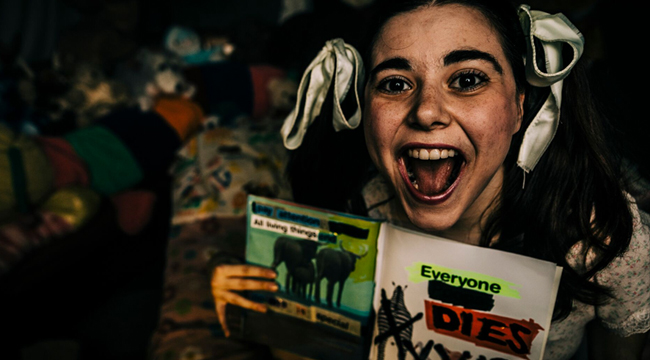
Modern Halloween celebrations have some core staples — costumes, trick-or-treating, jack-o-lanterns, and summoning our dark lord to do our bidding. Those all date back a relatively long time. But haunted houses, which we tend to consider similarly longstanding staples, don’t. When ancient Celts were carving up turnips for All Hallow’s Eve, they weren’t finishing up the night with a few pints of ale and a trip to the local community center to get scared by some acned teens dressed as ghouls. The first haunted attraction didn’t show up until 1915, and the style of attraction that most of us grew up with arrived much more recently than that.
This relative modernity is one reason these haunts are so fascinating. They are part of an industry that’s still undergoing constant change. To learn more about the scare industry, we reached out to Scott Simmons, the Creative Director of Pittsburgh’s ScareHouse — which lands in the top ten of most haunted house roundups. Located in a 100-year-old-Elks Lodge, ScareHouse now presents four unique attractions, including an ultra-immersive experience called The Basement. The Basement is 18 and over and you have to sign a waiver to enter; it’s also insanely popular.
Simmons has been running ScareHouse since it’s inception in 1999, when things operated on a much smaller scale. If anyone knows the fright biz, it’s this man. We spoke with him about trends in the industry, the process of developing a new program each year, the rise of extreme haunts, and about whether or not the business of scaring people is actually filled with sadists.
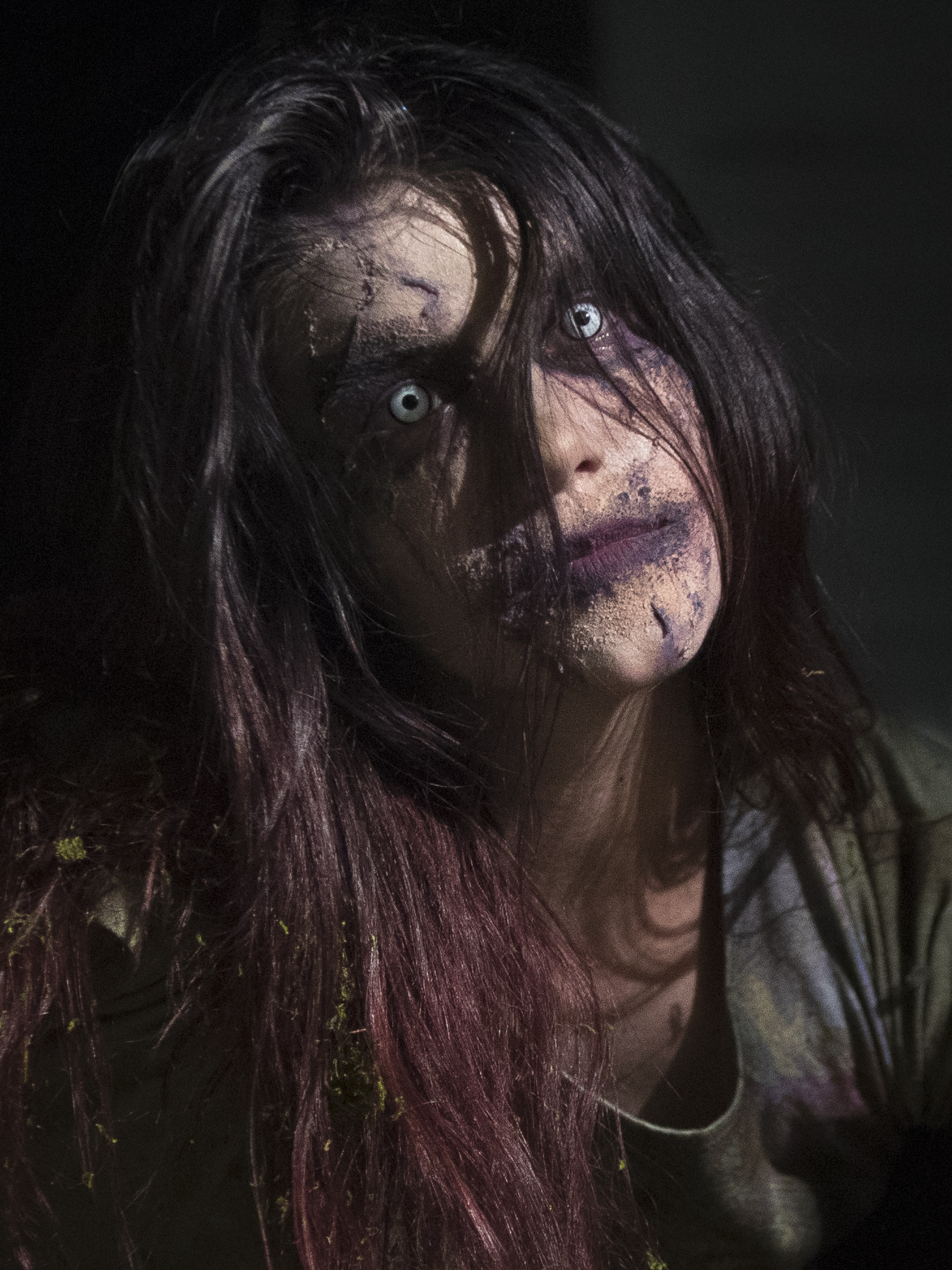
Your background is in writing and production, correct?
Yeah. I’ve lived in Pittsburgh my whole life and I’ve had two overlapping separate but equal paths. When I was in high school, I started volunteering at a YMCA haunted house, the kind which used to be all around Pennsylvania. They don’t really exist as much anymore, but these were the really low budget kind of things with clown white makeup and rubber masks from Kmart. I was doing that and loved it. At the same time, I have always been a huge movie nerd, and I got into video production and making videos. The two informed each other in a lot of ways. We’d be building the haunted house, and also figuring out how to shoot the videos for it and the photos for it.
Back in the 1990s, before there really was a haunted house industry if you will, you couldn’t really say, “Okay, I’m going to be a full-time haunted house guy.” That’s when I got into television production — doing marketing, news topicals, and videos, and that kind of stuff. The whole time, I never gave up on haunted houses. I never gave up on figuring out a way to be a full-time haunter, if you will. It took a long time because I believe the first time I volunteered at a haunted house would have been all the way back in 1985. We’re coming up on 33 years now I’ve been doing this. It wasn’t until the late 1990s/early 2000s with the internet that other haunted house owners and potential haunted house owners all started finding each other and exchanging information and ideas. We figured out, “Hey, let’s make an industry.”
I was in a place, roughly 10 to 12 years ago, when I started going freelance in TV because ScareHouse was taking up more and more of my time. Now, I’m proud to say that I’m the co-owner and this is my year-round paid job.
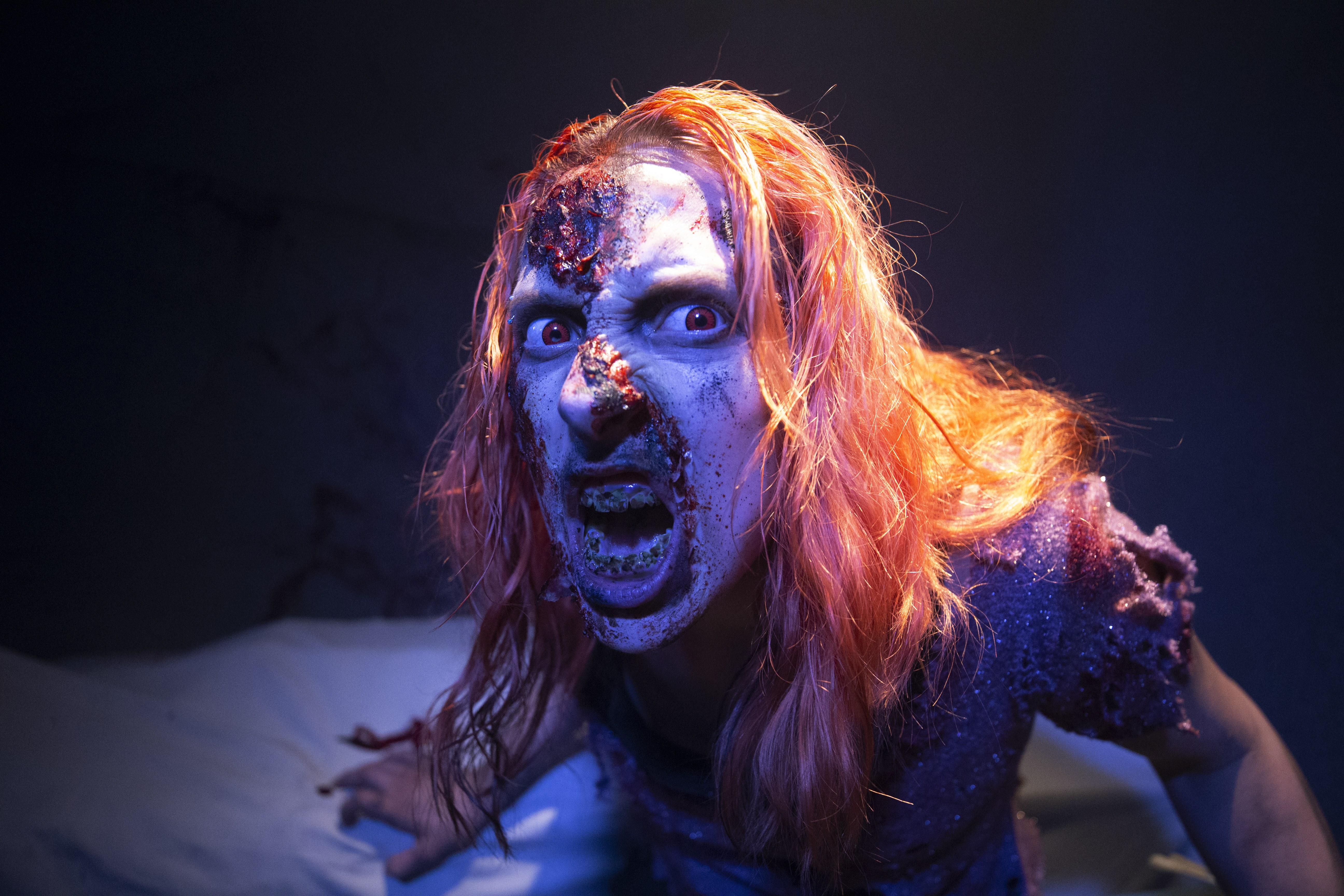
It literally takes you guys all year to get everything put together?
I had this conversation with somebody the other day because we change at least 40% (if not 50%) of all of our attractions, both ScareHouse and The Basement, every year. If you own a house and you say, “I’m going to renovate my bathroom,” it’s sort of understood to people. “Oh yeah, that’s like a three to a five-month project.” Now imagine that you’re renovating 7,000 to 9,000 square feet of space. Yeah, that’s a year-round job. It’s changing all the sets, coming up with new concepts and new themes, and then all of the marketing and the messaging has to be updated to change that.
I like using movie terms because I’m a huge movie nerd. If ScareHouse was a movie series where every October there’s a sequel, there’s the next chapter. What’s the story we’re going to tell this year? Who are the designers we’re going to work with? What are the characters we’re going to do? What are the videos going to look like? Then there’s also the timing, the stuff that isn’t necessarily as dynamic and fun. We’ve got close to 200 people on the payroll, so there’s seasonal payroll that you’ve got to process as you would in a normal business. It’s just that our true operating season is so incredibly compressed that you’re essentially spending all year getting ready for this crazy accelerated four to six-week operation schedule. It’s just nuts.
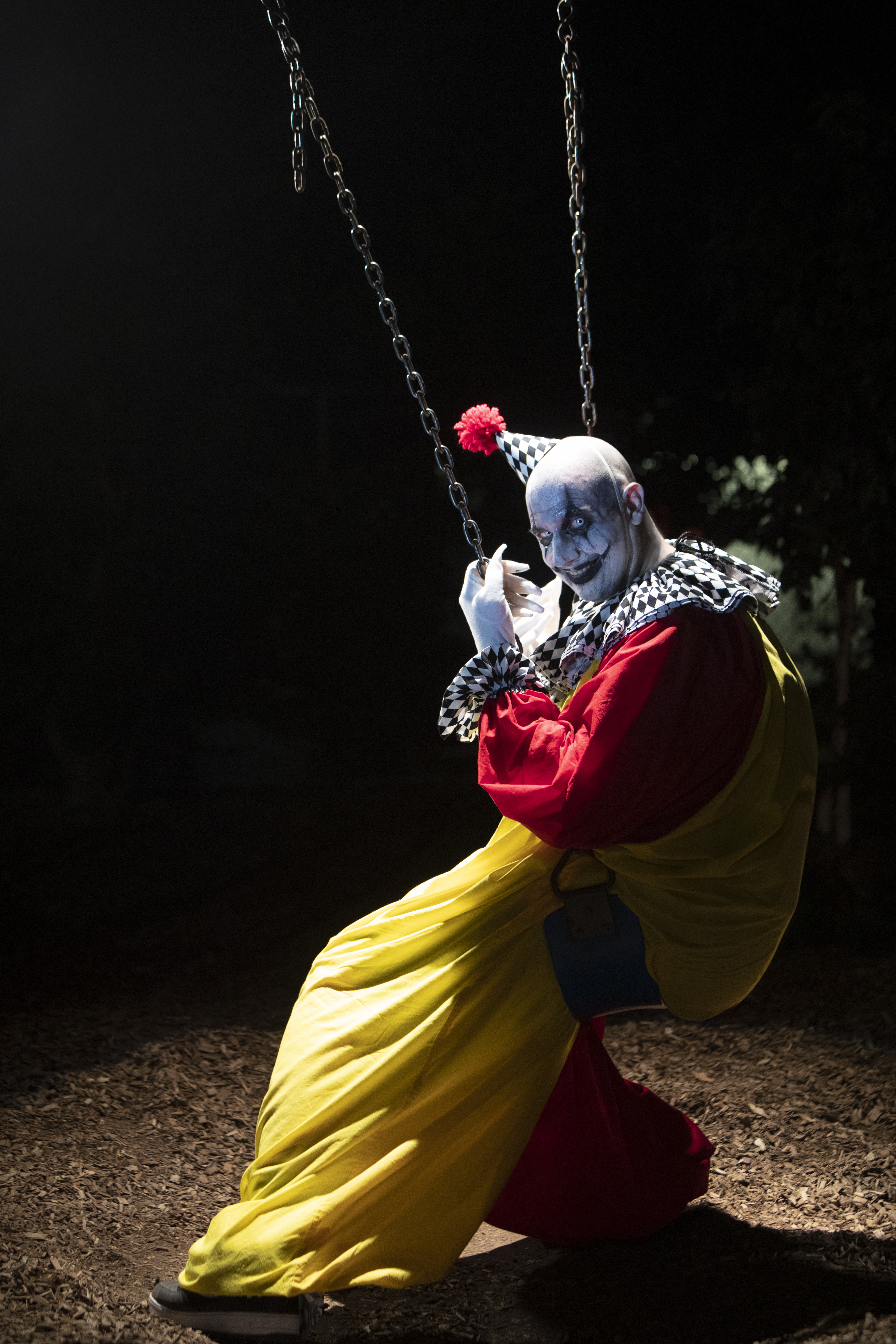
You’ve essentially been part of the industry since before it was an industry. Are there conventions and events and things?
There is the Transworld’s Halloween and Attractions Show based out of Chicago, and they have had a successful Halloween show for years. It was predominantly aimed at the retail division, like costuming and Halloween stuff. At some point in the mid-1990s, a few vendors came in. They said, “We want to sell stuff to people who do haunted houses.” In the early days, those of us who had haunted houses or wanted to get in the haunted house business were going on the internet learning there was a show. We all started going and finding each other. Year after year, the haunted attraction side kept growing. Roughly 10 years ago it actually split off.
Now Transworld has a show that they do out of St. Louis every March, and it is a trade show for the haunted attraction industry. It’s fun with all the scary stuff, but it’s not like going to a Monsterpalooza or a horror convention. It is an actual trade show. That’s where you’re going to talk to vendors to hear prices on severed heads, to debate on who has the best animated clowns. I’d say that has been the transformative thing, knowing every year you’re going to have thousands of haunted house owners all getting together, having seminars, and exchanging ideas. It’s not only an industry but if you think about it, it’s a relatively new industry.
I believe the first commercial haunted house (not the ones on the boardwalk but the ones where they’re only open during the season of fall, and they’re not for charity, but for a profit) started around 1974. But the industry itself didn’t really kick in until the early 2000s. It’s funny for me because I see people come through a haunted house who are college students, and they don’t know that there used to be a world where these haunted houses weren’t this elaborate, didn’t have theme park animations, didn’t have Hollywood quality sets.
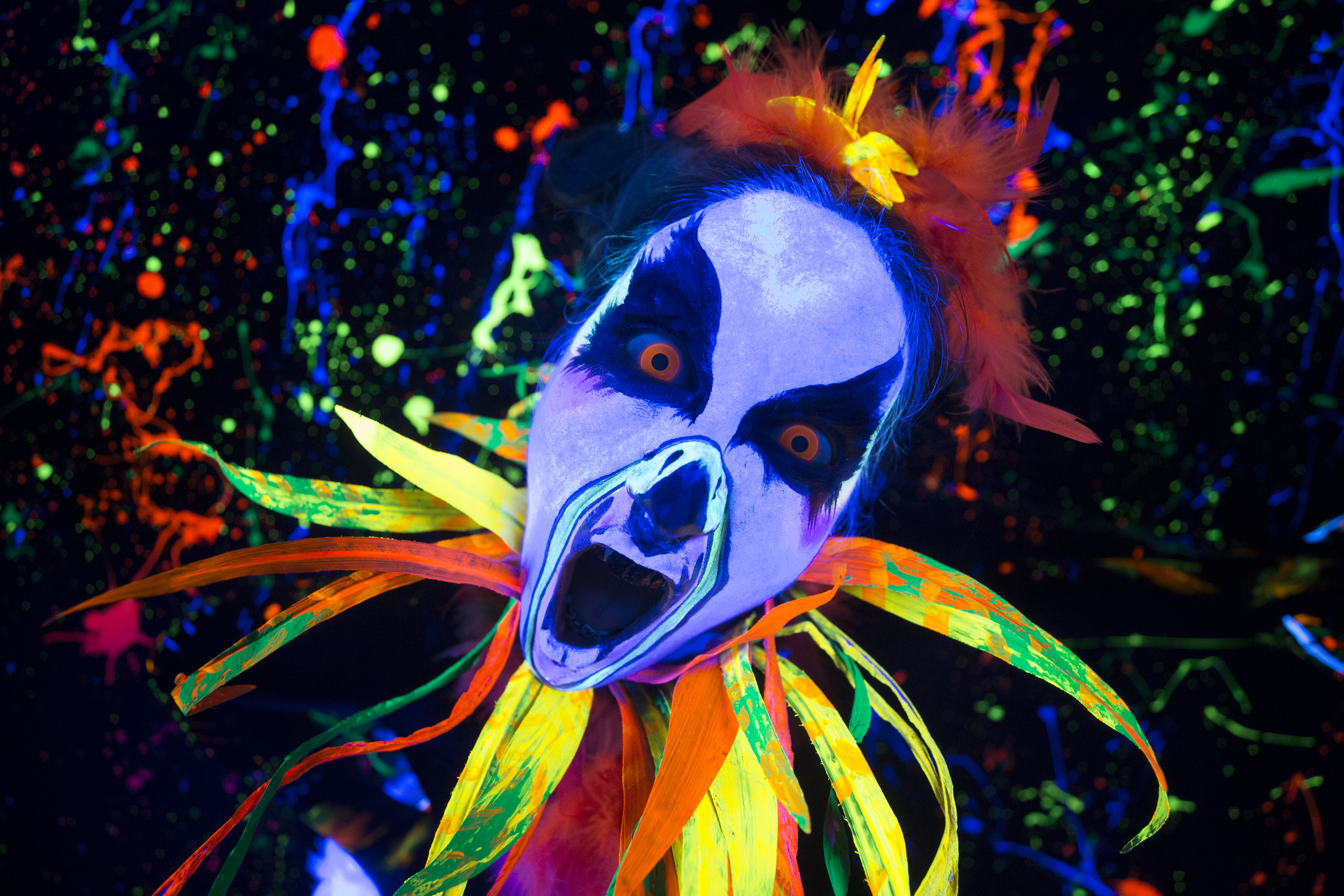
If there are all of you gathering at these things yearly, and the industry is growing, then there are obviously trends, right?
I think just like any industry, you start having some internal debates. I think nationally the haunted house industry is in a very interesting place right now because I feel pretty strongly that a haunted house is supposed to be something that you feel a little nervous about. It’s like that new roller coaster that looks really, really high. When a haunted house works, you should be nervous about going into it. But when you come out the end of it, you feel really energized and you feel excited. A customer should be like, “I wasn’t sure I was going to be able to make it through there, but I did, and I feel great.”
That was a big part of what led ScareHouse to develop The Basement six years ago. The feeling was: “Okay let’s do something that is more adult and more intimate and more psychological and more intense.” We don’t actually like it when people exit early or get too freaked out. We want them to come out laughing and sweating going, “Oh boy.” But we still want them to feel like they accomplished it. I think there’s also got to be something a little subversive about a good haunted house.
Making sure the customers safe is number one, but within that environment, you want to make it feel like that roller coaster. It’s got to feel like, “Oh my God, I could fall out, or this could happen.” It’s got to feel like you’re pushing your boundaries or you’re pushing yourself a little bit more. I feel like ScareHouse is really pushing that all the time, whereas there are definitely some haunted house owners who have been around for a while who are going the other way and feel like haunted houses should be like old school Halloween. They should feel like warm milk. Like, “Let’s not get edgy. Let’s keep it family friendly. Let’s be spooky.” That’s sort of a thing that’s been going on in the industry for a few years. You have a contingent that feels very strongly that the way haunted houses were done back 15 years ago is the way they should always be and that’s the way it’s got to be.
I think you need to be contemporary. In the same way that a movie or a book or a story that was really scary 15 or 20 years ago maybe has a little less impact now, your haunted house has to step it up a bit. I think you have to be relevant, and that’s a big thing that we do when we’re thinking about this year-round. When we’re doing our design in January, February, March, we’re looking at not only the data that customers give to us via surveys and things but also looking at cultural trends. We’re asking, “What are people responding to? What are they scared by? And what are things that they maybe are a little ambivalent about?” There’s a lot of strategies that go into it.
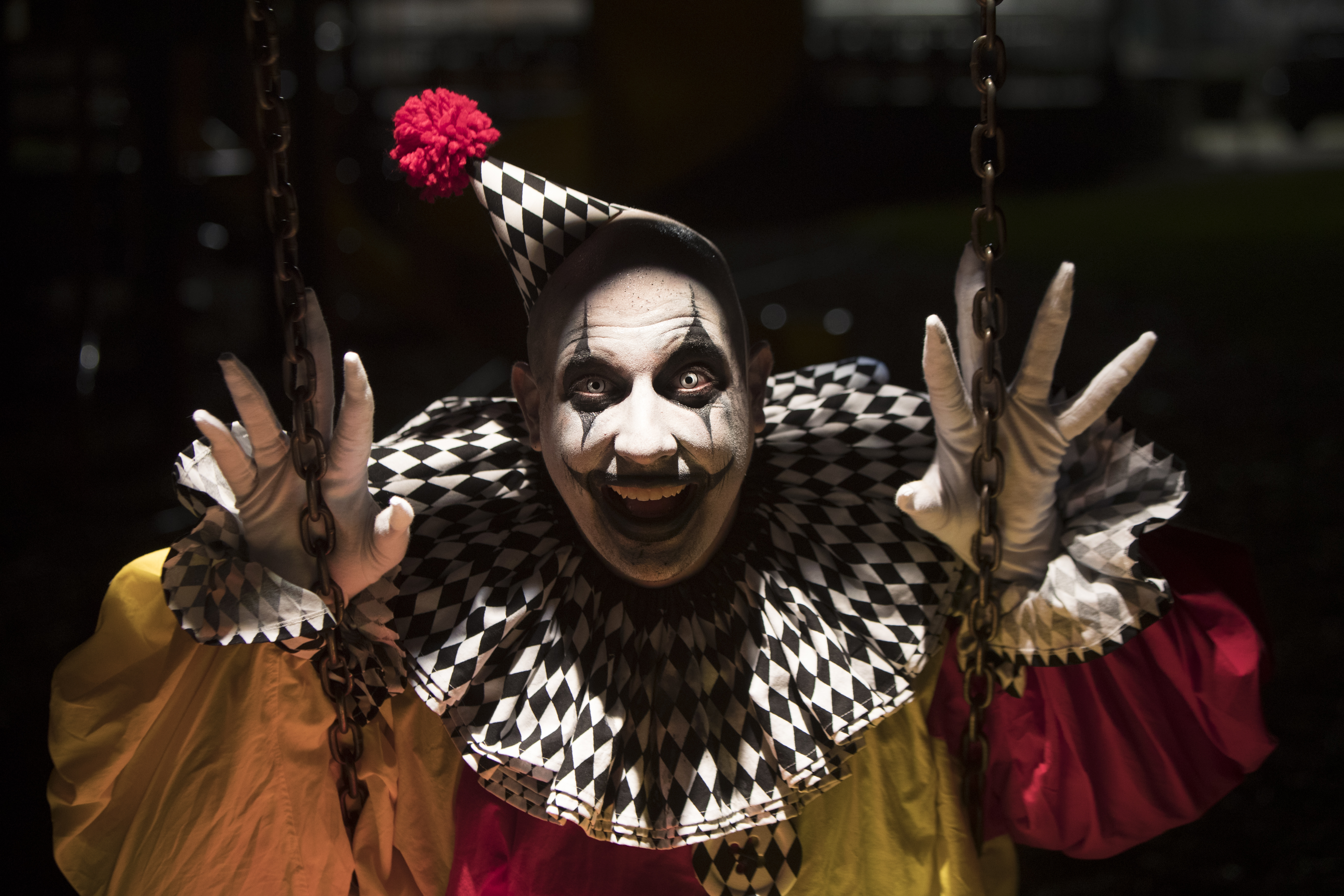
I’ve noticed that extreme haunts (the really terrifying experiences where people get dumped in the middle of the woods or their clothes get ripped off and they get vomited on) seem to be on the rise.
Yeah, you’re probably seeing more of the waiver and the extreme things. I have a couple of opinions on that. I think that some of those experiences — like the ones where they’re making you eat room temperature seafood — don’t sound fun. I think some of those experiences sound like fraternity hazing. If you tell the customer, “This is what’s about to happen to you,” and they know that and they opt-in, that’s one thing. Haunted houses now have been around for so long, if you have these horror fans who have been going through haunted houses every year for 10, 20, 30 years, they do start to feel like trying something “extreme.”
Sometimes I think it’s people saying, “Could I face this thing? Can I overcome it?” That is a gray area. But whenever we do things as we do in The Basement, we always make it clear. We’ll have customers out front who start to go in and then change their minds. They’re thinking, “I don’t think I can do this, I don’t know if I can do it.” We always say, “Yeah you can do it.” I feel like the people who greet you before you go into ScareHouse Basement are like the guys in the plane telling you to jump out the plane to skydive. We’re not making fun of you if you don’t do it, but you can do this. And when you do it, it’s going to feel great.
It’s not only that people are looking for something a little bit more intense and extreme to challenge themselves. You’re also seeing more and more of the unique, immersive experience aspect of it. In a traditional haunted house, you’re part of a group and you’re in a big line and you know there are all these people around you. What’s really interesting about not only a lot of these extreme haunted houses but even some of the immersive theater experiences is they’re an opportunity for you to be the star of your own horror movie.
You’re not just part of a group being processed through this thing, but you are alone in the bathroom with some creepy guy and a set of handcuffs. He’s going to start asking you questions, and you’re like, “What would I do in this situation? Could I handle it?” It’s a much different kind of thrill than you would get passively walking through a traditional attraction.
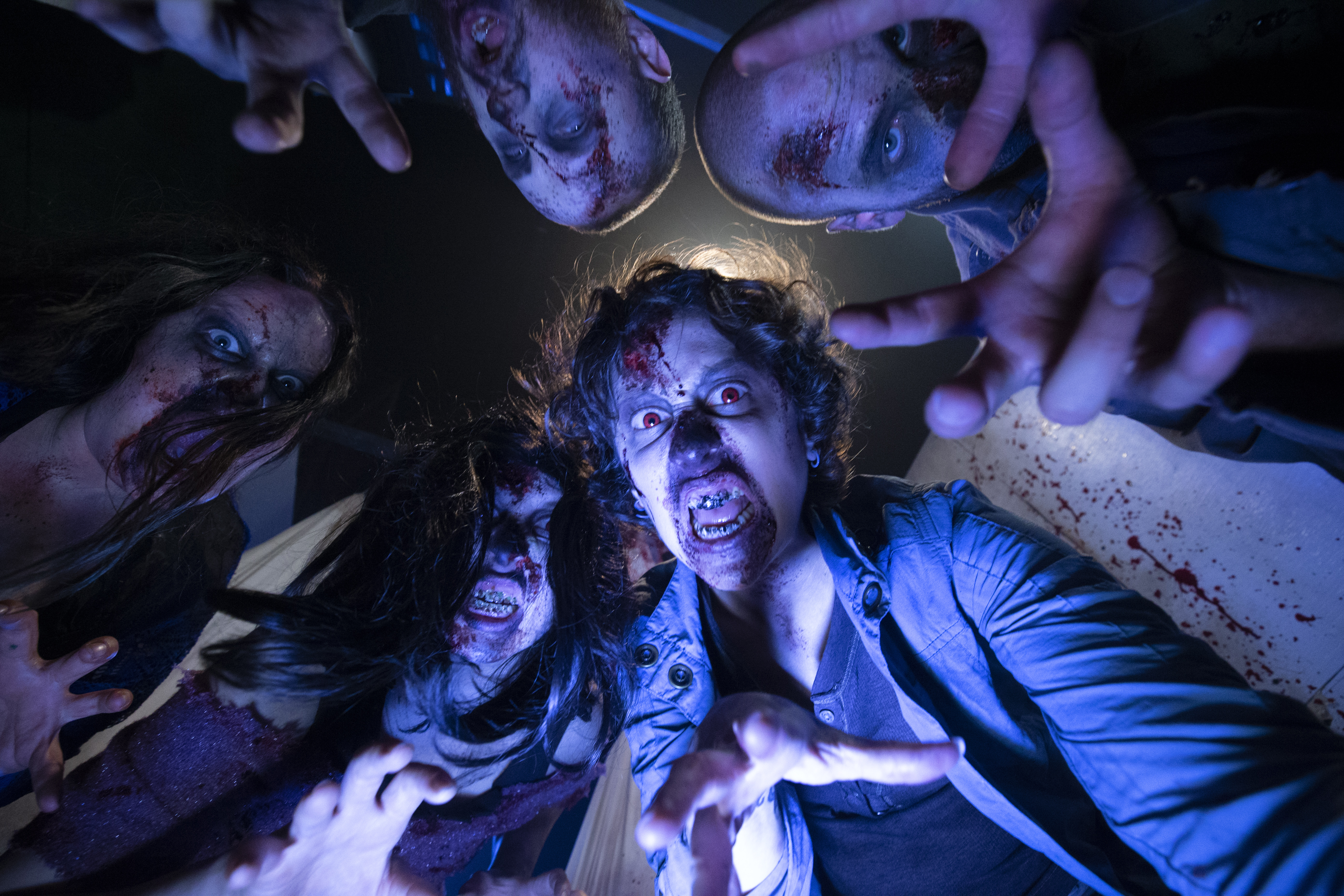
Everyone has a different threshold, so it makes sense that people who for their entire lives have had haunted houses, would start to need them to be more impactful. They have to do more to have the same result.
The Basement was one of the first high threshold experiences. Now, I know I was reading online the other day, there are a couple out there that are way more aggressive than what we’re doing, and God bless. We’re doing this thing The Basement that is more high threshold intense. That doesn’t mean that you can’t do a more traditional haunted house or even a family-friendly hayride.
I tend to think of it like an amusement park. If you go to the amusement park and you really enjoy the merry-go-round and the tamer roller coasters, when the amusement park puts in the new giant mega coaster that’s 300 feet tall with all the inversions and everything, you as a customer are going, “Yeah I’m not going on that.” It’s not like the amusement park takes away the things you like and forces you to do the more extreme roller coaster. That’s how I always feel about Basement versus ScareHouse or Basement versus traditional haunted houses. It’s something we’re offering for people who are looking for something that’s a bit more immersive and a bit more adult and a bit more tactile. But we’re not saying there’s something wrong for you if you still like the traditional ScareHouse.
Not only with our customers but also with people who work behind the scenes, there are some people who like roller coasters. Some people like the ones that spin you all around. Some people like the ones that go really tall. It’s finding your speed. It’s really interesting for us (because we run all the social media channels for all the stuff) to see the responses to Basement in particular because there’s very little middle ground. It is either, “This is the greatest thing ever. I loved it. I can’t stop thinking about it. Five stars.” Or “One star. I didn’t get it. I don’t understand, it seems like it was just people talking. I was in a room and we were talking and we were doing weird stuff.”
That kind of nuance though is spectacular though, right? As somebody who loves that industry, it must be super fun to see things diversify like that and become so much grayer, rather than black and white?
Absolutely. I think that is why the industry is in an interesting place right now. You have the actual haunted houses that have been around decades, and the modern haunted houses that’ve been here for 15 or 20 years now. It’s interesting because you see people who design haunted houses getting into things like escape rooms and these immersive theater experiences that are not even necessarily haunted, or creepy, or scary, but they share some of the same DNA. To me, all of those things are referencing each other in a way.
I think doing The Basement has been fun. The big buzz on Basement has always been the so-called extreme stuff that we’re doing. To me, the thing that’s most interesting about The Basement has been the intimate nature of it and also the experience aspect of it. It’s not, “I’m just part of this group going through this thing.” No. It’s “I’m having this unique experience and it’s very much like a choose your own adventure kind of thing.” How you interact with certain characters impacts what happens in the next scene, and the next scene, and the scene after that. That is something that I know I want to really pursue. I know other haunted house designers who want to do that too. We’re figuring out a way to create an experience where you can have people come in and make the revenue that you need to make to survive. But what are the ways we can do it to make the customer has a unique experience that is different than what somebody in the next group has or the group behind you had? How can you make it so that it is more personal? So you don’t feel processed, but you do feel like, “Oh, I’m going to star in my own horror movie.” That’s the goal we’re always shooting for with this stuff.
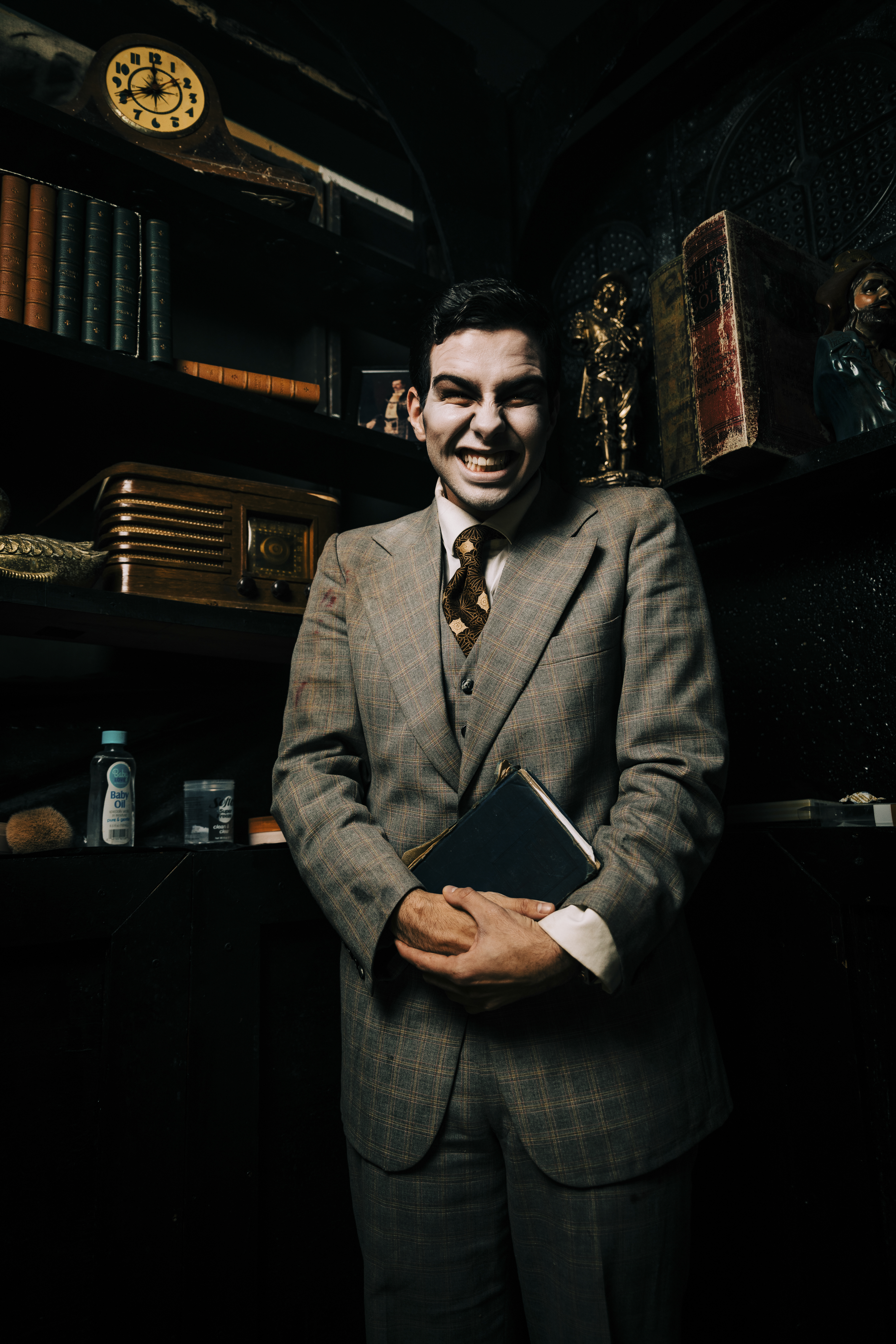
I have one last question so, I’m trying to figure out how to phrase this. As your job is devising ways to frighten people, is there some sort of pathology in that? Do people assume it is an industry that attracts sadists?
I really don’t think so. Having been in this since ScareHouse opened in 1999, frankly you do sometimes see somebody who wants to work for you and there are red flags. It’s like “Oh this person just seems mean. I don’t want to hire this person.” I think the people who not only work in the business but thrive in the business, tend to laugh a lot. They tend to smile a lot because they see somebody being scared as a release.
Our content at ScareHouse has always had this thin line between humor and horror. A good punchline of a joke is very similar to the popup of a clown jumping out of the closet. It’s unexpected and maybe you scream, or you laugh and your heart starts pounding. You’re like, “That was great.” It’s a communal thrill. “Oh my God, you guys,” and everyone celebrates it. When I think of somebody being a sadist, I think more of this weird power dynamic like, “You will submit to me.” I’ve never really picked up that vibe from the people who are really passionate about haunted houses and Halloween. It’s more of a celebratory thing as opposed to a submissive kind of thing.
I can tell you, we’ve definitely had situations at ScareHouse where you see people, especially younger people, and you can see they’re not ready for it. If I were ever to do a PSA about haunted houses, I would say, “If you’re bringing a little kid in and they’re clearly not into it, you’re not being a hero by saying, ‘You will do this, and you will like it.’ No, that kid is just going to be traumatized and he’s going to be resentful.”
I have so many friends, people I’ve known for years, who have never gone through my haunted house because when they were 10 or 11 years old, their parent said, “No, you’re going to do this, and you’ll like it.” They hated it, they weren’t ready for it. It becomes a point of trauma. That’s sadistic behavior. Knowing the difference between, “Oh God, I’m not sure if I can do this,” and “I don’t want to do this mommy.” That is a big part of this; you’ve got to be wanting to do it.






